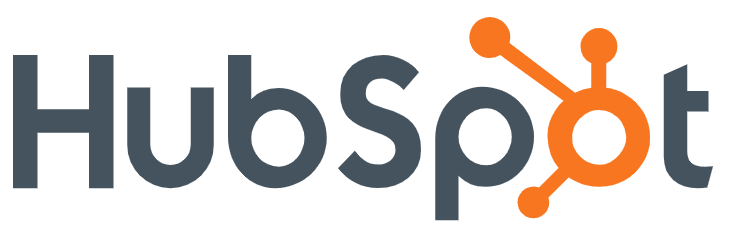This type of interview allows you to gain qualitative insights on the pain points, perspectives, and needs of potential customers. By providing a solution at the end of the interview, the proposed value proposition can be tested and adapted according to the feedback.
Customer solution interviews help to test a developed solution approach for the identified problem of your customers by qualitative research and to obtain feedback on it. Financial aspects such as the willingness to pay can also be queried to a first extent.
Step-by-Step Guide:
1. Define Your Objective
- Identify the Purpose:
- Determine what you want to achieve with the interviews. Typically, the goal is to validate the existence of a problem and assess if your solution effectively addresses it.
- Set Clear Objectives:
- Outline specific insights you need, such as understanding pain points, testing assumptions, or gauging interest in your proposed solution.
2. Prepare for the Interviews
- Identify Target Participants:
- Choose interviewees who represent your target audience and are directly affected by the problem you are exploring.
- Develop an Interview Script:
- Create a script with open-ended questions that guide the conversation without leading the interviewee. Include sections for exploring the problem first and then introducing your solution.
- Set Up Logistics:
- Schedule interviews, choosing a format that suits your participants (in-person, video call, or phone).
3. Conduct the Interviews
- Start with Problem Exploration:
- Begin by asking participants about their experiences related to the problem. Encourage them to share specific stories and examples.
- Dig Deeper:
- Probe further to understand the severity of the problem, its impact, and any current solutions they are using or considering.
- Introduce Your Solution:
- Present your solution conceptually without pitching. Ask how they would feel about using it, what features resonate, and any hesitations they might have.
- Capture Honest Feedback:
- Encourage participants to be candid, and listen carefully for concerns, suggestions, and validation of your solution.
4. Analyze the Feedback
- Organize Responses:
- Compile the feedback, categorizing it into themes such as recurring problems, positive reactions, criticisms, and suggestions for improvement.
- Identify Patterns:
- Look for commonalities in responses to assess the validity of the problem and the acceptance of your solution.
- Extract Key Insights:
- Highlight actionable insights that can guide your next steps, whether refining the solution, pivoting, or validating your business idea.
5. Iterate and Refine
- Adjust Your Solution:
- Use the feedback to refine your solution, addressing identified weaknesses or incorporating suggested improvements.
- Plan Next Steps:
- Decide whether additional rounds of interviews are needed, or if you’re ready to move on to the next stage, such as prototyping or launching an MVP.
Conclusion:
Problem-Solution Interviews are a powerful method for validating the existence of a real problem and assessing if your solution meets user needs. By engaging directly with your target audience, you gain valuable insights that help shape your product and reduce the risk of developing something that doesn’t resonate.
Example:
HubSpot: Implementation of Problem-Solution Interviews
1. Background: HubSpot, a leading provider of inbound marketing and sales software, was founded with the mission of helping businesses grow through better marketing strategies. Early on, HubSpot used Problem-Solution Interviews to understand the biggest challenges faced by small and medium-sized businesses in marketing and sales.
2. Implementation of Problem-Solution Interviews: HubSpot conducted numerous interviews with potential customers, focusing on understanding their marketing pain points:
- Objective: To validate the core problems businesses faced, such as difficulties in attracting traffic, generating leads, and measuring marketing ROI.
- Participants: HubSpot targeted small business owners, marketing managers, and sales professionals who represented their ideal customers.
3. Key Insights:
- Findings: The interviews revealed a significant gap in the market for an integrated platform that could help manage and streamline marketing activities. Participants frequently expressed frustration with the lack of affordable, easy-to-use tools for inbound marketing.
- Solution Validation: HubSpot introduced its concept of an all-in-one inbound marketing platform during these interviews, receiving positive feedback that validated their approach and provided actionable suggestions for features.
4. Results:
- Refinement of the Product: Feedback from the interviews helped HubSpot refine its product offering, adding features like analytics, lead nurturing, and SEO tools based on the identified needs.
- Market Fit: The insights gained allowed HubSpot to align its product perfectly with market needs, contributing to its rapid growth and success as a leading marketing software provider.
Conclusion:
HubSpot’s effective use of Problem-Solution Interviews allowed them to deeply understand their target audience’s challenges and create a tailored solution that directly addressed those needs. This approach was crucial in establishing HubSpot’s product-market fit and becoming a dominant player in the marketing software industry.

For more information on the topic, please see the source below:
Beveridge, W. E. (2023). Problem solving interviews. (1st ed.). Taylor & Francis Routledge. ISBN: 978-0-367-72077-3.

#Customer needs #Features & requirements #Benefits & value

.jpg)



